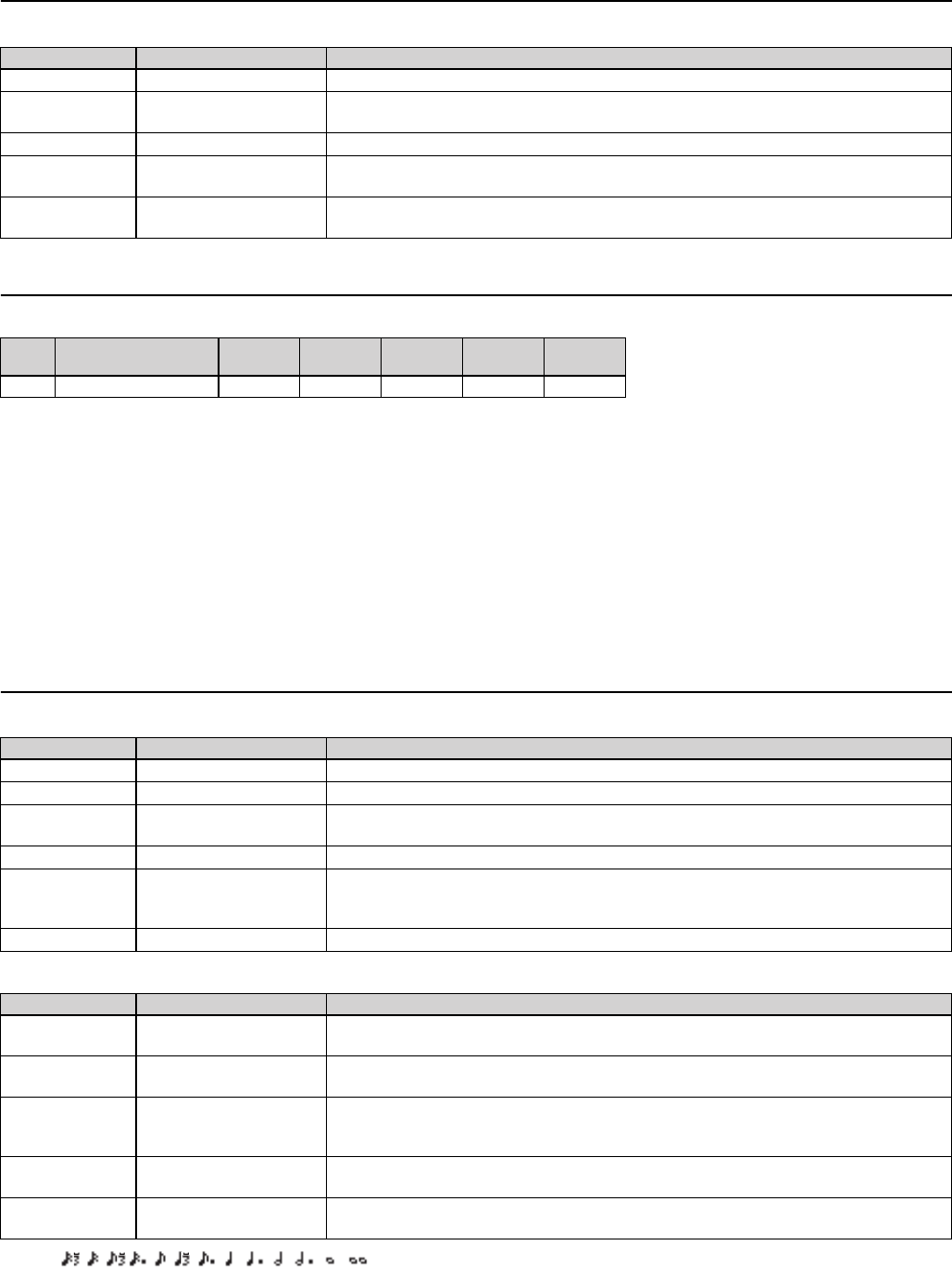
56 SPX2000—Owner’s Manual
Pan (CLASSIC bank)
This effect is based on earlier models of the SPX series. It cyclically varies the panning of the sound.
Each aspect of the sound is controlled by the following effect parameters.
Modulation signal: MOD.FREQ., DIR., DEPTH
Output level: OUT LVL, MIX BAL.
Parameter details
■Basic parameters
Effect list
The following table shows the default parameter values for the effect belonging to the Pan type (CLASSIC bank).
Modulation Filter (PRESET bank)
This effect cyclically moves the frequency band of a filter to modulate a specific frequency region.
Each aspect of the sound is controlled by the following effect parameters.
Modulation signal: FREQ., DEPTH, PHASE
Filter: TYPE, OFFSET, RESO.
Tempo synchronization: SYNC, NOTE, TEMPO
Output level: OUT LVL, MIX BAL.
Parameter details
■Basic parameters
■Fine parameters
Parameter name Range Explanation
MOD. FRQ 0.1—40.0 Hz
Speed of modulation (panning movement). Increasing this value will make the panning move more quickly.
DIR. L-->R, L<--R, L<->R
Direction of panning movement. You can specify that the panning move back and forth between
LR, or from L to R and then jump back to L (or vice versa).
DEPTH 0—100%
Modulation depth. Increasing this value will broaden the movement between L and R.
OUT LVL 0—100%
Output level after the original sound and effect sound have been mixed.
Decrease this value if you want to lower the output. At a setting of 0% there will be no output.
MIX BAL. 0—100%
Balance between the original sound and effect sound. At a setting of 0% only the original sound
will be output; at a setting of 100% only the effect sound will be output.
No. Effect name
MOD.
FRQ
DIR. DEPTH OUT LVL MIX BAL.
25 PAN 0.7 Hz L-->R 75% 100% 100%
Parameter name Range Explanation
FREQ. 0.05—40.00 Hz
Speed of modulation. Increasing this value will make the modulation repeat at a shorter interval.
DEPTH 0—100%
Modulation depth. Increasing this value will make the modulation deeper.
PHASE 0.00—354.38 dg
Phase difference between the modulation signal of the L channel and R channel. This controls the
sense of spaciousness.
TYPE LPF, HPF, BPF
Type of filter. Choose from LPF (Low Pass Filter), HPF (High Pass Filter), and BPF (Band Pass Filter).
OFFSET 0—100
Offset value for the filter frequency. Increasing this value will raise the frequency; decreasing this
value will lower the frequency. The filter frequency will change around this value. FREQ. sets the
speed of change, and DEPTH sets the amount of change.
RESO. 0—20
This is the resonance. Higher values will sharpen the frequency response curve of the filter.
Parameter name Range Explanation
MIX BAL. 0—100%
Balance between the original sound and effect sound. At a setting of 0% only the original sound
will be output; at a setting of 100% only the effect sound will be output.
OUT LVL 0—100%
Output level of the effect sound.
Decrease this value if you want to lower the output. At a setting of 0% there will be no output.
SYNC ON, OFF
Switches tempo synchronization on/off. If this is ON, the speed of modulation will synchronize to
the tempo synchronization source specified by “TEMPO SOURCE” (page 23). The NOTE value
will be set to the synchronized tempo value.
NOTE
*a
*a.
This parameter is used for tempo synchronization. If SYNC is ON, the FREQ. value will be set
according to this value and the TEMPO value. This value is ignored if SYNC is OFF.
TEMPO 25—300
This parameter is used for tempo synchronization. If SYNC is ON, the FREQ. value will be set
according to this value and NOTE. This value is ignored if SYNC is OFF.


















